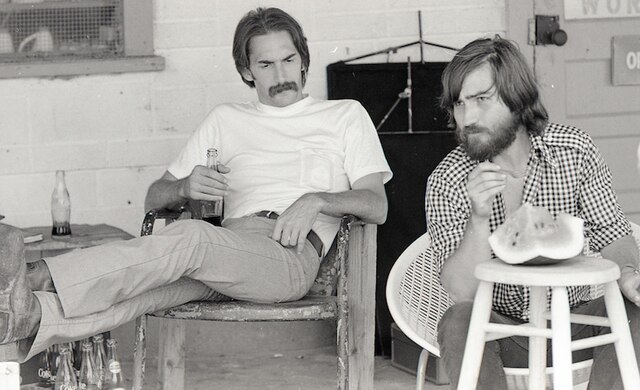Who, When ‘The Texas Chain Saw Massacre’ Had Its Premiere, Expected the ‘Brutal’ Film To End Up at MoMA?
That the picture’s reputation has gained in stature over the past half-century points to changing standards of taste. That, and the passage of time tends to temper outrage.

‘The Texas Chain Saw Massacre at 50’
The Museum of Modern Art
August 8-14
Upon receiving notice that the Museum of Modern Art, that bastion of high culture and self-avowed “catalyst for experimentation, learning, and creativity,” would be honoring the 50th anniversary of “The Texas Chain Saw Massacre” (1974), I wandered over to the bookshelf and pulled out my ragtag copy of the June 1975 issue of “Castle of Frankenstein.” The lead-off pieces in this seminal fantasy publication are reviews of the picture shortly after its initial release. These articles stuck in the memory because their authors, like Bob Dylan’s “Mr. Jones,” knew that “something is happening here, but you don’t know what it is.”
Remember: This was before director Tobe Hooper’s paean to one family’s strange notion of artisanal dining became a mainstay of popular culture. What was with this terrible movie that most of us knew primarily through its reputation? The first critic, Paul Roen, wrote that “all that truly counts is the brutal, sickening terror we feel.” Richard Buonnano followed up by observing that “the audience threw up its ‘super-coolness’ to the wind and reacted by screaming ‘Run … Run … Run!’” We had, in so many words, come a long way from Bela Lugosi creaking around the Universal Studios backlot.
MoMA was prescient in acquiring the film for its collection from the get-go. The cine savants on 53rd Street weren’t the only people who found the picture remarkable: Steven Spielberg hired Hooper to direct “Poltergeist” (1982) on the strength of “The Texas Chain Saw Massacre,” as well as the 1979 television series “Salem’s Lot.” The hubbub surrounding the true authorship of “Poltergeist” — some think Mr. Spielberg took the reins from Hooper — hasn’t prevented MoMA from including it in a concurrent series of films, “Tobe Hooper in the 1980s.”
Still, at the time of its release, most critics were aghast by “The Texas Chain Saw Massacre” and distributors were wary. How many countries banned the picture? Too many to list here.
That the picture’s reputation has gained in stature over the past half-century points to changing standards of taste. That, and the passage of time tends to temper outrage. Since then, the film has earned comparisons to the films of Pier Paolo Pasolini, Grant Wood’s “American Gothic,” and the musings of a French philosopher, Georges Bataille. It’s also been extolled as an exegesis on the benefits of anti-capitalism but, you know, people talk.

Hooper talked. “The Texas Chain Saw Massacre” was a young man’s response to the Watergate scandal, the 1973 oil crisis, the press’s fixation on sensationalism, and the war in Vietnam. Inspiration can come from a host of impulses, but the exigencies of art have their own transformative capabilities. The movie that resulted is dominated by one overriding goal: to scare the bejesus out of anyone who has the temerity to sit down and watch it. On those terms, history has failed in its mission to iron out the kinks of culture. Hooper’s picture has lost none of its authority.
All the standard observations apply: The acting is more miss than hit, the grotesqueries overstated, and the overall tenor excruciating. Notwithstanding the picture’s reputation, there is a grim humor to the proceedings. Gore is almost nonexistent; violence is implied through suggestion and a mise en scene that has the grainy realism of a documentary.
Unstoppable, grimy, and one of a kind, “The Texas Chain Saw Massacre” prompted one appalled contemporary viewer to wonder why on earth anyone would want to make a film like it. MoMA provides just that opportunity for the uninitiated and the dubious.

